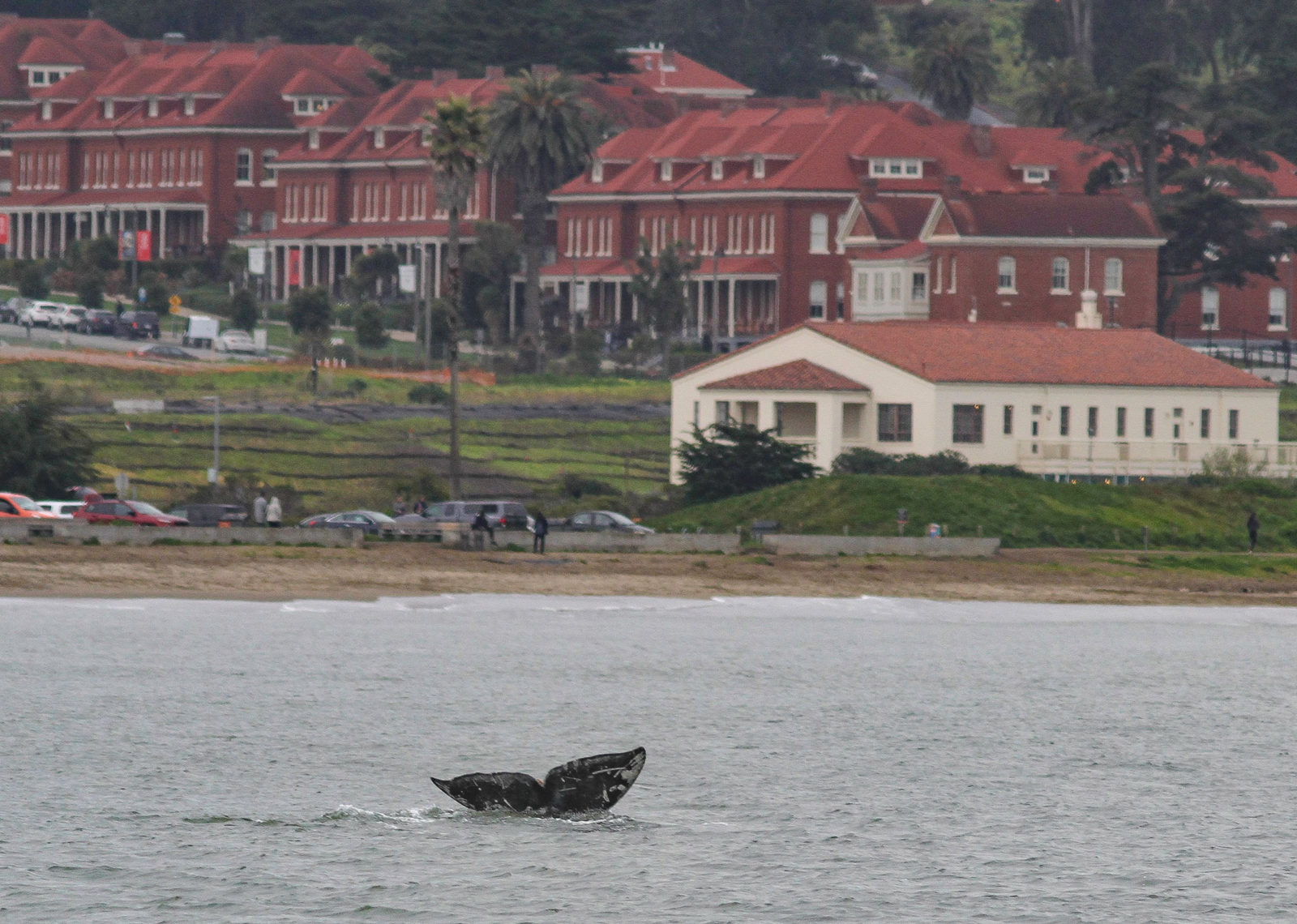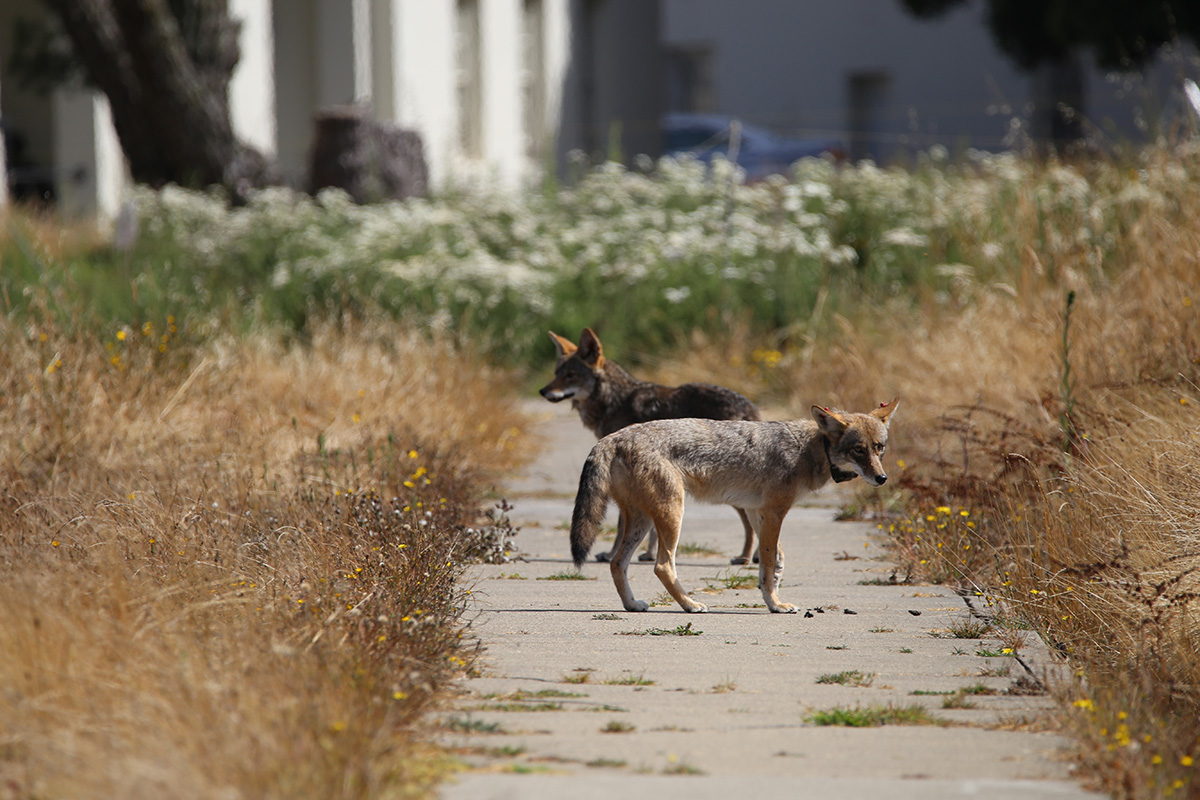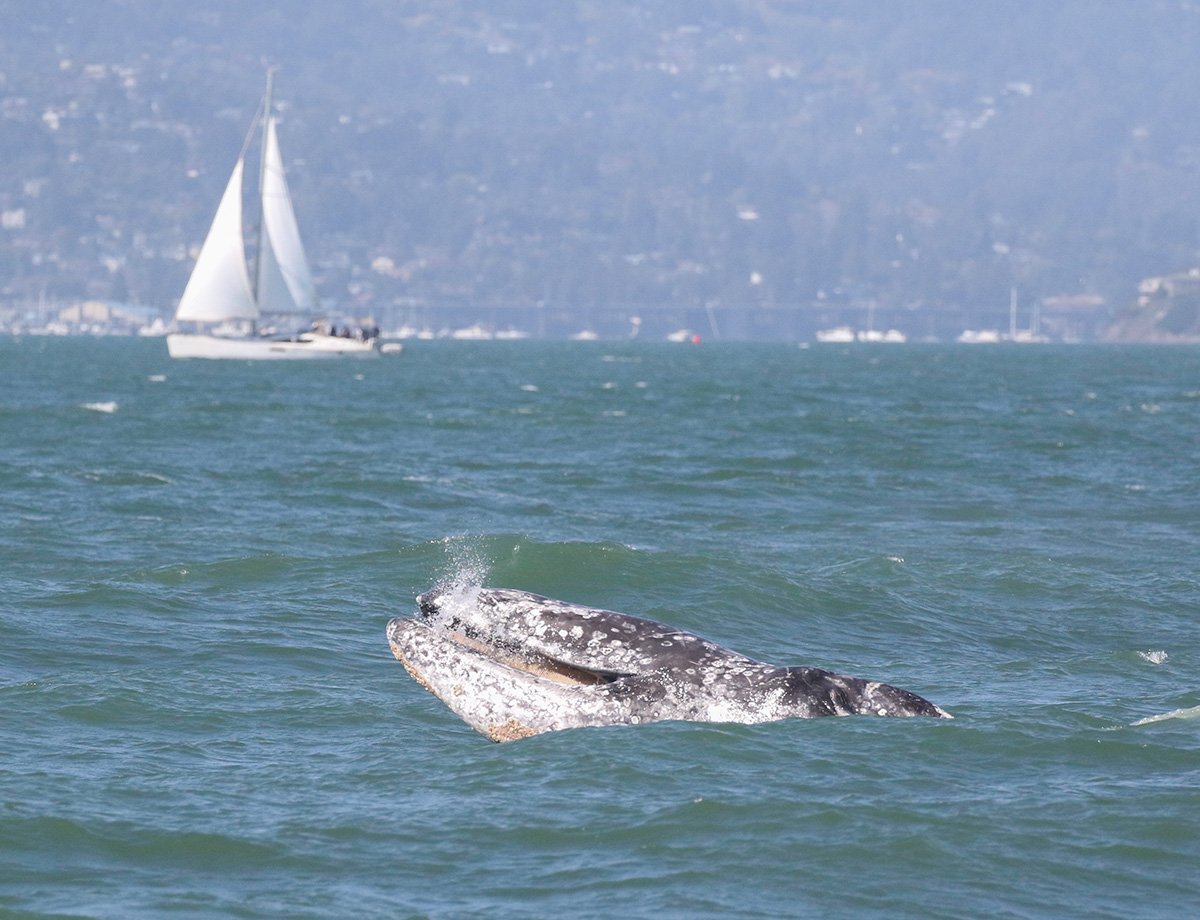
There’s a whole internet industry right now of accounts of how wildlife has reclaimed our empty spaces, from the viral hoaxes about dolphins in the Venice canals and elephants in the fields of Yunnan, China, to the widespread reports of coyotes enjoying free reign in locked-down San Francisco.
The dolphins and elephant stories were debunked — and I had some questions about the coyote behavior, too. If you’ve read Bay Nature in the last few years, you know coyotes wander the streets of San Francisco pretty freely even when the people are around. (Who did Wired call to ask about San Francisco coyotes? A Florida-based herpetologist who’s influential on Twitter.)
So it’s hard not to wonder if maybe it’s the people that have changed, and not the animals.
Over the last week, I talked to a number of experts who track or follow wild animals in Northern California to see what they’ve seen — or not — in the world without us. Here’s what they said:
Coyotes

Coyotes are, well, always pretty common in our neighborhoods. San Francisco Animal Care and Control, which deals with coyotes and other common urban animals, said they haven’t seen any difference in the animals themselves — but they’re seeing more reports from people. “We’ve been getting a lot more of those,” ACC Public Information Officer Deb Campbell said. “Coyotes in the streets, on the sidewalk, lying on the lawn. Nothing that we haven’t seen before. But maybe people are bored and looking out their windows and seeing them more.”
Jonathan Young, an ecologist at the Presidio Trust who’s put tracking collars on a number of coyotes in San Francisco, says he too hasn’t seen them doing anything different since the people cut back. “None of our tracking info shows any difference,” Young said in an email. “My hunch is that people are less in the cubicle and more in quarantine (which ironically means more outside time) and starting to notice their local neighbors that were always there.”
Young said he’s concerned that people might interpret normal coyote denning behavior — they’re preparing to have pups, now, and so might be extra-defensive — as unusual, particularly with most of the city’s dog parks closed and additional dogwalkers visiting the Presidio. There are signs up around trails or areas where they’re denning — it’s a good idea to respect them.
Marine Mammals

There have also been a lot of whale sightings in the last month. Is that because we’re doing anything differently? Probably not.
Gray and humpback whales have increasingly been coming into the Bay over the last few years. The gray whales that people have reported seeing spout in recent days and weeks are on their spring migration so their presence here right now isn’t exceptional. What is more unusual and unfortunate is the health of the ones in the Bay. They might be sick, part of a coast-wide, still unexplained die-off dating back to last year. “We also knew that the effects from last year could linger into this year, so we’ve been expecting gray whales in the Bay again in 2020, and that is what is happening,” said Bill Keener, a research associate at The Marine Mammal Center’s Cetacean Field Research Program, by email. “Our team is maintaining the sightings database and ID photos for the gray whales in the Bay, and since February 19, we have had gray whales in the Bay every day. One was here for a month, and our photos do show that some of them (not all) are skinny. In 2019, the peak month for gray whales in the Bay was April, so we’ll have to see what happens as their northbound migration continues.”
(Keener said, though, that every report of a whale in the Bay is useful. Members of the public can share their own sightings with Keener here.)
Keener said harbor porpoises continue to forage normally in the Bay. The sea lions at Pier 39 are spending more time in the water, perhaps, which Keener said is “sea lions acting normally” when there aren’t as many boats around.
Mountain Lions
I emailed the Santa Cruz Puma Project, which has collared mountain lions throughout the Santa Cruz Mountains. Chris Wilmers, a wildlife ecologist who leads the tracking project, wrote back right away with a one-line email: “We haven’t seen any changes.”
Roadkill
Maybe, I thought, there would be evidence of our reduced road footprint. But according to a report by the UC Davis Road Ecology Center, that hasn’t been the case — for animals at least. In a “Special Report: Impact of COVID19 on Traffic Accidents,” released on April 1 and updated on April 3, UC Davis ecologist Fraser Shilling wrote, “There was no detectable reduction in animal-vehicle conflict, though with less traffic on roads, we predict that there may be fewer animals killed. We could not find a statistically significant change in all incidents involving animals, or deer-vehicle conflict events alone. This could be because not enough time has elapsed, or because even with a ~50% reduction in traffic, it is still not enough to measurably benefit wildlife and domestic animals.”
This, Shilling wrote, was despite human traffic collisions decreasing dramatically, to about half their normal numbers.
Birds

Surely, at least, we’ve all noticed the birds singing in the morning. Though it might not have changed their movement. Alvaro Jaramillo, a scientist at the San Francisco Bay Bird Observatory, said there might be some extremely local effects, but overall he doesn’t think there’s any positive or negative effect of the shelter-in-place. “On the whole activity by people tends to be ignored by birds unless they are ground or beach/mudflat dwelling birds, and we directly disturb them by our movements,” Jaramillo wrote in an email. “The other disturbance can be from garbage brought by picnickers that may attract crows/jays/ravens and the like, creating a greater predator load in the area. But that is not happening, people seem to be walking about but not picnicking anywhere.”
Still, birds use their songs to attract mates. And it’s possible, said Allen Fish, director of the Golden Gate National Parks Conservancy’s Golden Gate Raptor Observatory, that the reduction in human noise will have an effect there. In an email, he wrote, “We know that city noise profoundly affects an ecosystem’s soundscape, from making it difficult for birds to attract mates to territoriality, etc. Is that having an impact?”
It’s an experiment, unparalleled in recent history. But as to whether he’s seen anything different … not yet. “More to follow for sure,” Fish wrote.
(In the Pacific Northwest, the University of Washington has started a citizen science project to try to get some answers. Though of course we might not have them for years.)
Citizen Science
If many animals don’t seem to be changing their patterns, are people who watch nature changing theirs? Perhaps, according to data from the citizen science platform iNaturalist. In a March 26 iNat Forum post, iNaturalist co-founder Ken-ichi Ueda wrote that in spring 2019 the use of iNaturalist peaked on the weekends and declined as the week started. Over the last few weeks, however, the observation peaks have flattened into the week itself, possibly because more people are hunting for nature during the workweek.
Have you seen something different happening in nature this spring? Or maybe you’ve just noticed a change in yourself, and what you notice? Let us know in the comments!




